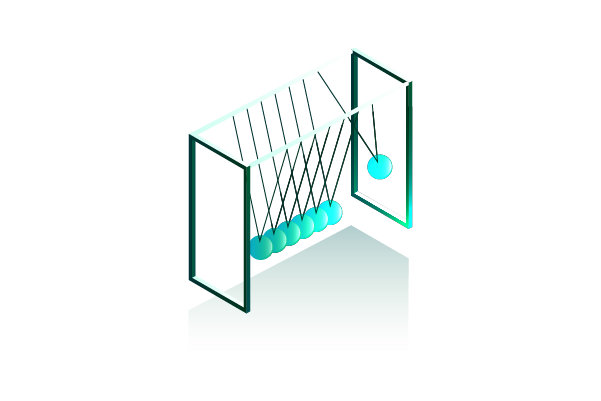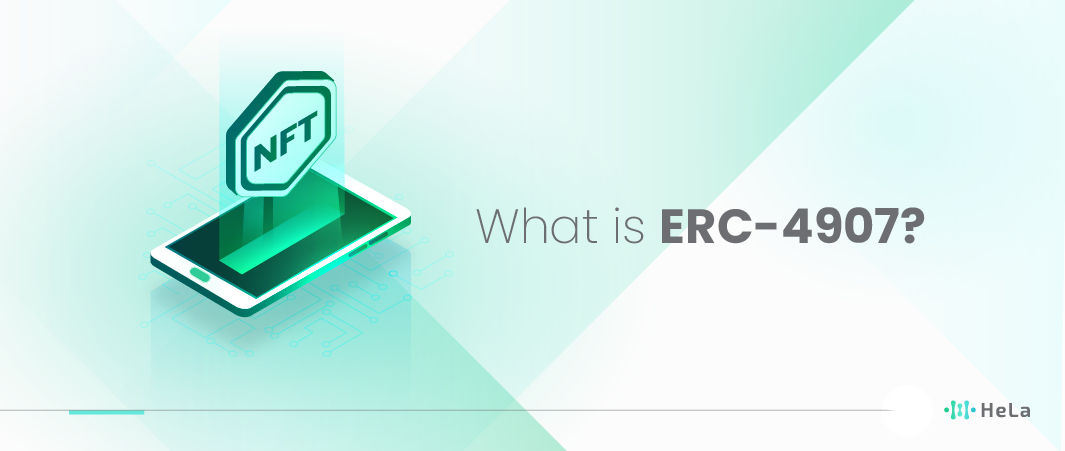The ERC-4907 standard marks a significant breakthrough in the Non-Fungible Token (NFT) landscape, heralding a transformative phase in the digital asset rental market. As an innovative extension of the widely recognized ERC-721 standard, ERC-4907 introduces a nuanced dual-role mechanism. This mechanism effectively differentiates between the ‘owner’ and ‘user’ of an NFT, a distinction that streamlines the rental process considerably. By doing so, it ensures a transparent and efficient assignment of rights and responsibilities, a critical factor in the burgeoning market of NFT rentals.
Delving deeper into the functionality of ERC-4907, this standard addresses some of the primary challenges previously faced in the NFT sector, particularly around the temporary transfer of usage rights. By enabling the separation of ownership and usage rights, it allows NFT owners to retain ownership while granting usage rights to others for a specified period. This approach not only enhances the flexibility and liquidity of NFTs but also opens up new avenues for creators and collectors alike, fostering a more dynamic and inclusive NFT ecosystem.
In this comprehensive guide, we aim to unravel the intricacies and practical applications of ERC-4907. We will explore how this novel standard is revolutionizing the NFT landscape, reshaping the way digital assets are utilized, rented, and perceived. From the implications for NFT creators and collectors to its potential impact on broader digital economies, we will provide a thorough analysis of ERC-4907, setting the stage for a deeper understanding of its role in the evolving world of digital assets.
What is ERC-4907?

ERC-4907 is a groundbreaking Ethereum token standard that enhances the traditional ERC-721 framework, primarily used for Non-Fungible Tokens (NFTs), by enabling a more flexible rental mechanism. This standard introduces the concept of separating ‘ownership’ and ‘usage’ rights within NFTs. In a typical ERC-721 setup, the owner of an NFT has complete control and rights over it. However, ERC-4907 innovates by allowing owners to lend or rent out their NFTs without transferring ownership.
Under ERC-4907, an NFT can have both an ‘owner’ and a ‘user.’ The owner retains all the standard ownership rights, such as selling or transferring the NFT. In contrast, the user acquires the right to use or interact with the NFT for a specified time period. This is particularly useful in scenarios like gaming, where players might need temporary access to certain in-game items or assets, or in the case of subscription-based services, where access is granted for a limited time.
Also Read: Solidity Data Types: The Complete Reference
The smart contract of an ERC-4907 token includes functions to set or update the user and the expiry date of their usage rights. Once the user’s rights expire, they automatically revert, ensuring that the owner doesn’t need to manually reclaim their asset. This feature streamlines the process of NFT rental, making it more secure and efficient.
By facilitating this clear separation of roles and automating the time-bound usage rights, ERC-4907 paves the way for innovative NFT leasing and lending models. It opens up new possibilities for NFT monetization, allowing NFT owners to generate passive income while maintaining ownership, and enabling users to access assets that might be financially prohibitive to purchase outright. Additionally, this standard is designed to be compatible with existing NFT marketplaces and wallets, ensuring a broader adoption and integration within the NFT ecosystem.
The Technical Mechanism Behind ERC-4907
ERC-4907 is an Ethereum token standard designed to facilitate the rental of Non-Fungible Tokens (NFTs) by introducing a distinct user role separate from the owner. This standard addresses a common challenge in the NFT space: enabling temporary access or control over an NFT without transferring full ownership. By incorporating this dual-role system, ERC-4907 allows NFT owners to maintain ownership while granting usage rights to another party for a specified period.
The technical mechanism of ERC-4907 revolves around specific functions and events that manage the ‘user’ role and the expiration of this role. Here are the key components and their roles in the system:
1. setUser Function:
- Purpose: The setUser function is at the heart of ERC-4907. It allows NFT owners to assign a user to their NFT and set an expiration date for the user’s rights. This function is crucial for initiating the rental process.
- Parameters: It typically takes the following parameters:
- The NFT ID (indicating which NFT is being rented out).
- The address of the user (who will be granted usage rights).
- The expiration timestamp (after which the user’s rights will expire).
2. userOf Function
- Purpose: The userOf function provides information about the current user of an NFT. It’s a way to query the system to find out who has the usage rights of a specific NFT at any given moment.
- Output: It returns the address of the current user.
3. userExpires Function
- Purpose: The userExpires function complements userOf by providing information about when the user’s rights will expire for a specific NFT.
- Output: It returns a timestamp indicating the expiration date and time of the user’s rights.
4. Events
- ERC-4907 also defines events such as UpdateUser which are emitted when the user of an NFT is set or changed. These events are crucial for front-end applications and external systems to react to changes in user assignments.
By integrating these functions, ERC-4907 streamlines the NFT rental process, ensuring clarity and security for both parties involved. Owners can monetize their NFTs by renting them out, confident in the knowledge that they retain ownership and that the user’s rights are clearly defined and automatically revoked upon expiration. Users, on the other hand, can access and utilize NFTs for specific periods, suitable for various applications like gaming, licensing, or temporary asset utilization, without needing to purchase the NFT outright. This standard is a significant step forward in the evolution of the NFT ecosystem, introducing more flexibility and utility for digital assets.
The Impact of ERC-4907 on the NFT Rental Market

The introduction of the ERC-4907 standard marks a transformative phase in the NFT (Non-Fungible Token) rental market. Before its advent, the process of renting NFTs was cumbersome and fraught with security concerns. ERC-4907 addresses these challenges by introducing a streamlined protocol for the delegation of usage rights without transferring ownership. This is particularly impactful in markets like gaming and virtual real estate, where users frequently exchange assets temporarily.
In gaming, for instance, ERC-4907 can facilitate the rental of in-game items, such as weapons or outfits, allowing players to access premium content for a limited period. This not only enhances the gaming experience by providing flexibility and variety but also opens a new revenue stream for game developers and asset owners. Similarly, in virtual real estate, this standard can simplify the leasing process, enabling owners to rent out their digital spaces or properties in virtual worlds with ease and security.
By enabling a clear distinction between ownership and usage rights, ERC-4907 ensures that the original owner retains control over their NFT while allowing others to use or benefit from it temporarily. This separation is crucial for fostering trust and security in the rental transactions, assuaging concerns about asset misappropriation or unauthorized use.
Furthermore, the adoption of ERC-4907 is likely to enhance the liquidity of NFTs. Owners who may not wish to sell their assets outright can monetize them through rentals, making the market more dynamic and accessible. This increased liquidity and the subsequent market expansion could attract a broader audience, including those who may not have considered NFTs viable or practical before.
The implementation of ERC-4907 stands as a significant milestone in the evolution of the NFT landscape. It not only simplifies and secures the process of NFT rentals but also paves the way for a multitude of innovative applications and business models. By resolving the complexities associated with usage rights and asset control, ERC-4907 is poised to play a pivotal role in the mainstream adoption and practical utility of NFTs in various sectors.
Real-world Applications and Collaborations
ERC-4907, a novel Ethereum token standard, is swiftly gaining traction in the digital asset world due to its unique capabilities, particularly in the realm of non-fungible tokens (NFTs). Unlike traditional NFT standards, ERC-4907 introduces the concept of a ‘user role,’ separate from the ‘owner role,’ enabling a more flexible and dynamic approach to NFT management and utility. This distinction allows for temporary transfer of usage rights without relinquishing ownership, a feature particularly beneficial in rental or subscription-based models.
Recognizing ERC-4907’s potential, Double Protocol, a platform at the forefront of the NFT rental space, has integrated this standard into its framework. This integration is not just a technical enhancement but also a strategic move. Double Protocol harnesses ERC-4907 to create a decentralized infrastructure that empowers NFT owners to lease their assets without losing ownership, thereby opening up new revenue streams and expanding the utility of NFTs beyond their traditional confines.
The strategic collaboration between Double Protocol and Shardeum, a smart contract platform known for its scalability and efficiency, is particularly noteworthy. Shardeum’s commitment to fostering a scalable and user-friendly blockchain ecosystem aligns well with the objectives of Double Protocol. By integrating ERC-4907-based NFT rental solutions into Shardeum’s ecosystem, this partnership aims to enhance the functionality and accessibility of NFTs. This integration not only broadens the scope of NFT utility across various sectors but also marks a significant step towards a more interconnected and fluid NFT market.
Such collaborations are pivotal as they demonstrate the real-world applications and transformative potential of ERC-4907. By enabling a more nuanced and versatile approach to NFT ownership and usage, ERC-4907, together with platforms like Double Protocol and Shardeum, is paving the way for a more dynamic and inclusive digital asset market. As these partnerships evolve and new applications emerge, the landscape of NFTs and digital ownership is set to undergo significant and exciting changes.
Future Prospects and Developments

The adoption of ERC-4907 marks a significant milestone in the maturation of the digital asset market, signaling a shift towards more sophisticated and nuanced models of ownership and utilization. This standard, by disentangling the concepts of ownership and usage rights, lays the groundwork for a new era of NFT innovation, enabling more dynamic and flexible interactions with digital assets.
In the realm of gaming, ERC-4907 could revolutionize the way in-game assets are managed and monetized. Players could, for instance, temporarily obtain the rights to use certain in-game items or characters, enhancing the gaming experience without necessitating full ownership. This not only opens up new revenue streams for game developers but also allows for a more inclusive and varied gaming ecosystem.
Also Read: 10 Top Crypto-Friendly Countries You Should Know in 2024
In the real estate sector, particularly in virtual worlds or metaverses, this standard could facilitate novel forms of property leasing or sharing. Users could gain temporary access to virtual spaces or assets for specific purposes, such as hosting virtual events or showcasing digital art, fostering a more vibrant and interactive virtual real estate market.
Moreover, in the domain of intellectual property management, ERC-4907 has the potential to simplify and streamline the licensing processes. Creators and IP owners could offer time-bound usage rights to their works, ensuring control and remuneration while simultaneously promoting wider distribution and accessibility.
As more platforms and protocols integrate ERC-4907, the digital asset market is poised to undergo a transformative expansion, characterized by a surge in innovative NFT-based products and services. This standard not only enhances the functionality and versatility of NFTs but also aligns with broader trends towards a more interconnected and user-centric digital economy. The future prospects of ERC-4907 are indeed promising, as it redefines the boundaries of digital ownership and utility, paving the way for a new landscape of digital interaction and commerce.
Conclusion
ERC-4907 emerged as a pivotal innovation in the ever-expanding universe of Non-Fungible Tokens (NFTs), introducing a sophisticated and adaptable framework tailored to the flourishing NFT rental sector. This standard’s introduction of a dual-role mechanism is not merely an enhancement of operational clarity regarding rights allocation; it’s a cornerstone that supports the construction of a diverse range of novel applications and partnerships. This innovation is particularly timely, aligning seamlessly with the dynamic evolution of the digital realm. The role of ERC-4907 in sculpting the trajectory of digital asset management and utilization is remarkably profound. Its design thoughtfully addresses the complexities inherent in the digital leasing domain, offering solutions that are not just robust but also inherently versatile. The implications of this are vast, signaling a transformative shift in how digital assets are perceived, utilized, and managed across various platforms and industries.
As ERC-4907 continues to gain traction and integrate into various ecosystems, its influence on the NFT landscape is anticipated to be both transformational and far-reaching. This protocol is not just redefining the paradigms of asset leasing in the digital sphere; it’s laying the groundwork for an era marked by enhanced security, operational efficiency, and an expansive horizon of possibilities. The promise of ERC-4907 extends beyond the immediate horizon, hinting at a future where digital asset leasing operates with unparalleled fluidity and innovation. By setting new standards in the NFT market, ERC-4907 not only addresses the present needs of digital asset management but also anticipates and shapes future trends, ensuring its position as a pivotal player in the ongoing narrative of digital innovation and asset utilization.
Disclaimer: The information provided by HeLa Labs in this article is intended for general informational purposes and does not reflect the company’s opinion. It is not intended as investment advice or recommendations. Readers are strongly advised to conduct their own thorough research and consult with a qualified financial advisor before making any financial decisions.

Joshua Soriano
I am a writer specializing in decentralized systems, digital assets, and Web3 innovation. I develop research-driven explainers, case studies, and thought leadership that connect blockchain infrastructure, smart contract design, and tokenization models to real-world outcomes.
My work focuses on translating complex technical concepts into clear, actionable narratives for builders, businesses, and investors, highlighting transparency, security, and operational efficiency. Each piece blends primary-source research, protocol documentation, and practitioner insights to surface what matters for adoption and risk reduction, helping teams make informed decisions with precise, accessible content.
- Joshua Soriano#molongui-disabled-link
- Joshua Soriano#molongui-disabled-link
- Joshua Soriano#molongui-disabled-link
- Joshua Soriano#molongui-disabled-link

